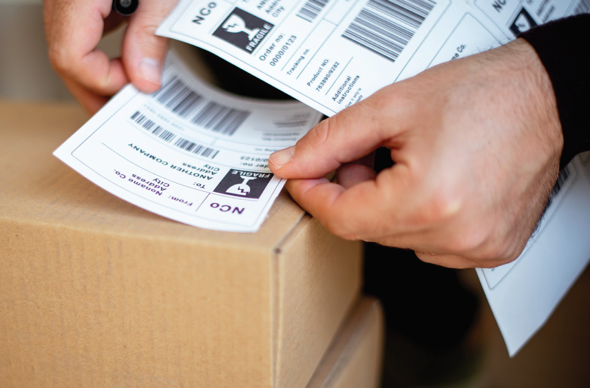Shipping labels are not just stickers; they are essential tools that streamline operations, minimize delivery errors, and communicate professionalism. Whether you’re managing a home-based startup or a nationwide distribution network, professional shipping labels play a critical role in ensuring your logistics and branding are on point.
Why Shipping Labels Are Crucial for Business Operations
Shipping labels serve as the backbone of any shipping process. They contain all the information necessary to ensure packages reach the correct destination, including sender and receiver addresses, tracking numbers, barcodes, and special handling instructions. Mistakes or inefficiencies in labeling can lead to delivery delays, customer dissatisfaction, and financial losses.
For small businesses, a well-designed shipping label can help establish legitimacy and trust. For larger companies, efficient labeling systems reduce operational bottlenecks and maintain consistency across multiple shipping channels.
Types of Professional Shipping Labels
1. Standard Shipping Labels
Standard shipping labels include basic details such as destination address, return address, and barcode for tracking. These are commonly used by postal services like USPS, FedEx, UPS, and DHL. Ideal for eCommerce and general product shipping, they offer quick scanability and compliance with logistics systems.
2. Thermal Shipping Labels
Thermal shipping labels are printed using heat, without the need for ink or toner. They are cost-effective and smudge-proof, making them perfect for high-volume operations. Businesses using thermal printers benefit from faster processing and lower maintenance costs.
3. Custom Branded Shipping Labels
These labels incorporate your brand’s colors, logo, and message. Custom labels enhance your brand recognition and provide a premium unboxing experience. This is particularly important for boutique retailers, subscription box companies, and DTC brands.
4. Fragile and Special Handling Labels
These labels indicate handling instructions such as “Fragile,” “This Side Up,” or “Perishable.” These specialized tags are essential for businesses dealing with sensitive or temperature-controlled goods.
5. International Shipping Labels
For businesses shipping abroad, international labels include customs declarations, Harmonized System (HS) codes, and documentation required by destination countries. Mistakes in these labels can result in packages being held at customs or returned.
Design Elements of Effective Shipping Labels
Readable Fonts and Clear Layout
Shipping labels should feature easily scannable fonts and clear separation of fields. Avoid decorative typefaces that could hinder barcode readability or cause misinterpretation.
High-Quality Materials
Label stock matters. Use durable, tear-resistant, water-resistant materials, especially for long-distance or international shipments. Labels should remain intact throughout the logistics chain.
Proper Sizing
Ensure that your shipping labels fit the packages correctly without wrapping around edges or covering product branding. Common sizes include 4×6 inches for parcel shipments.
Inclusion of Barcodes and Tracking Numbers
Barcodes facilitate quick scans during transit, improving tracking accuracy and logistics efficiency. Make sure they are printed in high resolution for optimal machine readability.
How to Print Shipping Labels Efficiently
1. Desktop Printers
For low-volume businesses, inkjet or laser printers can handle shipping label printing. Use label sheets that are compatible with your printer type.
2. Thermal Printers
For high-volume shipping operations, thermal printers like Zebra or Rollo models offer fast, high-quality output with lower operating costs. They are ideal for printing hundreds or thousands of labels daily.
3. Label Printing Software
Use software tools like ShipStation, EasyPost, or Shippo to automate label generation. These platforms integrate with major eCommerce stores and marketplaces, allowing for one-click label creation.
4. Batch Printing and Automation
Businesses can save time by printing labels in batches. Automating label creation through APIs or shipping software reduces manual input and minimizes errors. more
Best Practices for Applying Shipping Labels
-
Position the label flat and in the center of the largest face of the package.
-
Avoid placing labels over seams or corners.
-
Use adhesive labels, not tape over paper labels, to ensure durability.
-
Cover with transparent plastic if shipping in wet or dusty environments.
Compliance with Carrier Requirements
Each carrier (FedEx, UPS, USPS, DHL) has specific label requirements. Make sure to:
-
Match label size and layout to the carrier’s standards
-
Include scannable tracking barcodes
-
Use proper classification (ground, air, express)
Failure to comply may lead to surcharges, delayed deliveries, or returned packages.
Benefits of Using Professional Shipping Labels
Enhanced Brand Image
Professional shipping labels with brand elements project a credible, polished image that builds trust with recipients.
Improved Operational Efficiency
Accurate, scannable labels reduce manual handling, speed up sorting, and decrease the chances of delivery mishaps.
Cost Savings
Avoid reshipments and penalties due to mislabeling. Thermal labels also reduce printing supply costs.
Customer Satisfaction
Correct and timely deliveries, supported by clear tracking, lead to a better overall customer experience and increased retention.
Choosing the Right Shipping Label Partner
Look for a label supplier or software provider who offers:
-
Customizable label templates
-
Integration with eCommerce platforms
-
Bulk pricing options
-
Fast turnaround times
-
High-quality label stock
Many businesses choose to partner with packaging companies like custom designs boxes that offer end-to-end solutions, including boxes, inserts, and labels, to maintain consistency across the unboxing experience.
Conclusion
In today’s competitive market, the efficiency of your shipping process directly impacts your business success. Whether you’re sending out 10 packages a week or 10,000, professional shipping labels ensure smooth operations, build trust, and reinforce your brand at every touchpoint. Investing in quality label design, printing, and application practices can lead to reduced costs, fewer returns, and a significant boost in customer satisfaction.







0 Comments